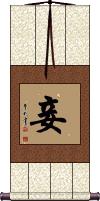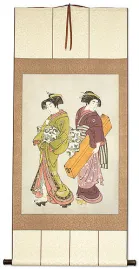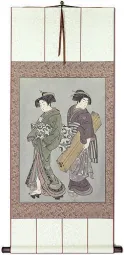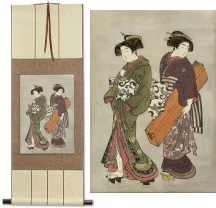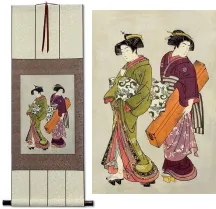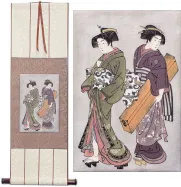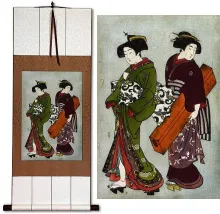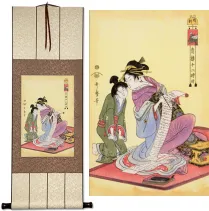Many custom options...
And formats...

Mistress Concubine Servant in Chinese / Japanese...
Buy a Mistress Concubine Servant calligraphy wall scroll here!
Mistress / Concubine / Servant
妾 is the most simple way to say concubine or mistress in Chinese, Japanese Kanji, and old Korean Hanja.
Sometimes this can mean servant. Occasionally, a woman may use this title in place of “I” or “me” to say “your humble servant” in a self-deprecating way.
This in-stock artwork might be what you are looking for, and ships right away...
Gallery Price: $178.00
Your Price: $98.88
Gallery Price: $144.00
Your Price: $79.88
Gallery Price: $108.00
Your Price: $59.88
Gallery Price: $108.00
Your Price: $59.88
Gallery Price: $72.00
Your Price: $39.88
Gallery Price: $108.00
Your Price: $59.88
Gallery Price: $108.00
Your Price: $59.88
Abstract Old Man & Servant Chinese Modern Art
Discounted Blemished
Gallery Price: $29.00
Your Price: $16.00
Not the results for Mistress Concubine Servant that you were looking for?
Below are some entries from our dictionary that may match your Mistress Concubine Servant search...
| Characters If shown, 2nd row is Simp. Chinese |
Pronunciation Romanization |
Simple Dictionary Definition |
妾 see styles |
qiè qie4 ch`ieh chieh shou / sho しょう |
More info & calligraphy: Mistress / Concubine / Servant(1) (See 妾・めかけ) mistress; kept woman; concubine; (pronoun) (2) (archaism) (humble language) (feminine speech) (See 妾・わらわ) I; me |
Variations: |
sobame そばめ |
(1) (kana only) (dated) (See 妾・めかけ) mistress; kept woman; concubine; (2) (archaism) (orig. meaning) close female servant |
The following table may be helpful for those studying Chinese or Japanese...
| Title | Characters | Romaji (Romanized Japanese) | Various forms of Romanized Chinese | |
| Mistress Concubine Servant | 妾 | mekake / sobame / onname | qiè / qie4 / qie | ch`ieh / chieh |
Successful Chinese Character and Japanese Kanji calligraphy searches within the last few hours...
